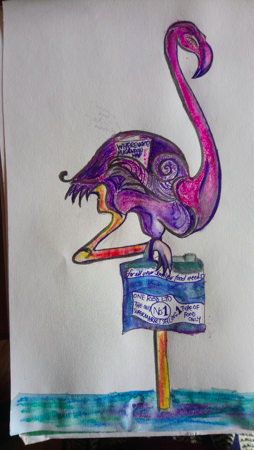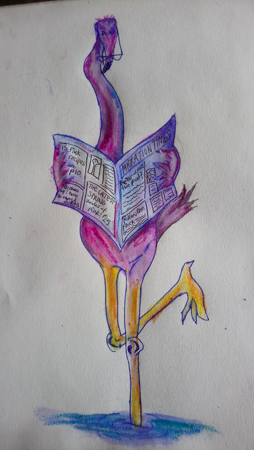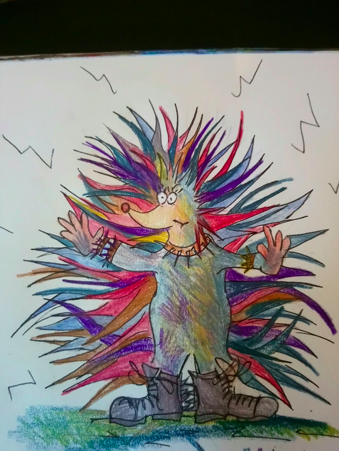Supporting the Supporters: in what ways can we assist those caring for loved ones with eating disorders and autism spectrum disorder?
Who are the Supporters?
Supporters include anyone looking after an autistic loved one with an eating disorder . This can include professional, paid carers, such as staff working on the inpatient unit, in outpatient to daycare, or in supported accommodation and community settings. Supporters include biological and non-biological family members friends, colleagues and neighbours.
How can we Involve Supporters in Treatment?
The NICE Guidelines for eating disorders encourage the involvement of carers in treatment planning and state that supporters are should receive emotional and social support and practical support.
Joining together with loved ones in attending treatment admission assessments, ward rounds, care planning meetings and reviews is a really good way of sharing risk, making shared and well-informed decisions and planning ways of moving forwards.
For some, it might feel uncomfortable to include supporters in their care and for them to know personal details. There are lots of ways around this. Agreements could be made with the treating team what information everyone is happy to be shared which information should remain private. Supporters could receive their own help and guidance from the team, and the professionals providing this support can focus on key skills and knowledge that may help supporters themselves, rather than discussing personal details about their loved one.

Providing Supporters with the Help they Need to do their Caring Role
It is well documented in the research literature that those caring for a loved one with an eating disorder can experience psychological distress and their role can impact their quality of life (e.g. Kyriacou, Treasure & Schmidt, 2008). At the same time, parents of autistic people are also significantly more likely to experience their own psychological difficulties compared to parents of children without autism spectrum disorders (Bromley, Hare, Davison & Emerson, 2004). This can be a particular problem where an autistic adult child has unmet care needs (Hare, Pratt, Burton, Bromley & Emerson, 2004) and this is something that can be really tough, given the limited services available for autistic adults and the cuts that services more generally have experienced in the UK. Looking after a loved one with both an eating disorder and autism spectrum disorder is therefore likely to present an even greater challenge to the health and wellbeing of the carer.
In What Ways can we Help Supporters Take Care of Themselves?
Eating disorder services can run regular carers’ workshops to provide information and skills training to support those caring for a loved one with an eating disorder. Information on how to run these workshops is available for services in a number of places. Langley, Treasure and Todd (2018) have produced an extensive guide on how to run carers’ workshops entitled “Caring for a Loved One with an Eating Disorder: The New Maudsley Skills-Based Training Manual.” Collaborative Care Skills Training Workshops are also outlined in research articles by Treasure et al., (2007), Treasure, Whitaker, Todd and Whitney (2012) and Pépin and King (2013).
Carers’ workshops are skills-based training sessions which can be attended by both carers/supporters and professional carers (staff members from eating disorder services or other services looking after people with eating disorders). These workshops typically involve sharing 1) psychoeducation on EDs and 2) professional communication skills (motivational interviewing) to better equip carers to support their loved ones with an ED based on the New Maudsley Method (Treasure, Schmidt & Macdonald, 2009).
Animal Metaphors: Understanding Interpersonal Responses to Eating Disorders in the Context of Autism Spectrum Disorders or Autism Spectrum Disorder Traits
The New Maudsley Method (Treasure, Schmidt & Macdonald, 2009) explores the interpersonal responses evoked by eating disorders and describes these through the use of animal metaphors. For example, this model suggests describing interpersonal responses associated with anger, hostility and confrontation through the metaphor of a rhinoceros. An anxious, frightened response is represented by the jellyfish. A nagging, frustrated reaction is characterised by a terrier dog. An avoidant, confused and overwhelmed response is represented by an ostrich, with its head in the sand in denial. An overprotective, overinvolved interpersonal style is reflected through the kangaroo figure with the person with an ED in the pouch. Carers are taught communication skills and ways of helping their loved one to manage negative emotions so that they can provide ‘dolphin care,’ associated with just the right amount of support, involvement and emotion. Carers are also supported to draw on the metaphor of the St Bernard dog which represents going out to the depths of despair and providing comfort and rescue, supported by something for the carer’s own needs in the barrel around the dog’s neck.

How might we Understand Interpersonal Responses to an Eating Disorder and Autism Spectrum Disorders?
The Hedgehog
The spines of this mammal might represent the ‘prickly response’ of the autistic individual when their routine is disrupted or an expected change occurs. Hedgehogs roll into a ball in self-defence and this reflects the ‘freeze’ response that we have seen in autistic patients with an eating disorders when faced with a challenging decision or situation. In spite of their prickly spines, we also have a sense of wanting to protect these rarely seen creatures and this is a common experience when looking after autistic people with eating disorders. Hedgehogs also have rare traits, such as being immune to snake venom and this represents the unique strengths of an autistic person with an eating disorders which might evoke interest and wonder from others.
We can use this metaphor to help carers to understand their responses to their loved one and to explore alternative ways of reacting to challenging circumstances.
The Pink Flamingo
Pink flamingos are striking and distinctive and stand out in their habitats. These characteristics reflect the difference that people supporting autistic loved ones can experience. These elegant birds live in large social groups, reflecting the social support a carer will need to draw on to manage the challenges of caring for a loved one with an eating disorder and autism spectrum disorder. This social group may also provide scaffolding for the social life of their loved one, as building their own social network may be more challenging for a person with an eating disorder and autism spectrum disorder. Pink flamingos are known to be very vocal birds and this characteristic reflects the feedback that carers have shared around having to speak up for their loved one, and in many cases, having to shout very loud to get the understanding, help and support that their loved one needs and deserves. Pink flamingos are also described as ‘skittish,’ meaning they run away easily and hide from potential threats, and this trait reflects the stress and anxiety experienced by carer of an individual with an eating disorder and autism spectrum disorder. Further, pink flamingos move location when resources are lacking, and this nicely reflects the difficulties that many families have experienced around getting care locally, as many have had to travel to services in other parts of the country, have not found good resources locally and some have had to wait a long time for a specialist appointment and diagnosis. Thinking about experiences that carers have had around getting help and understanding for their loved one using this metaphor can help carers to know that they are not alone and that their reactions are part of their natural caring tendencies. They can then be supported to identify the strengths and resources they do have and to mobilise these to find new ways of caring for their loved one.
We discuss these metaphors during the workshops and carers are invited to explore how the animals might represent their own responses to their loved one’s ED. We have found that these metaphors are helpful to carers whose loved ones have an ED as well as ASD.

Other Ways to Adapt Carers Workshops to Support Supporters Looking After Loved Ones with Eating Disorders and Autism Spectrum Disorders
Explain Autism Spectrum Disorder/Autism Spectrum Disorder Traits as Co-Occurring Relatively Often Alongside Eating Disorders
There are many well know comorbidities, or cooccurring symptoms that people experience alongside an eating disorder. These include depression, anxiety, obsessive compulsive disorder and body dysmorphic disorder. You can help supporters to understand that autism spectrum disorders are another form of comorbidity. You can support attendees of the workshops to find common group through exploring examples from their lived experience. For example, sensory differences in relation to food can provoke anxiety for autistic people with an eating disorders and people with eating disorders will also experience severe anxiety in relation to food. Although carers looking after autistic people with an eating disorders are likely to experience life-long challenges with their loved ones’ food choices and eating, other carers of those with eating disorders will also recognise how eating became more selective and challenging over time from when eating disorders first develop. Another area might be interpersonal difficulties. Like in autism spectrum disorders, these are well documented in people with eating disorders who report smaller social networks and social anxiety. Carers could be supported to share and discuss their experiences and think about how they could support their loved ones with these challenges.

Other Ways of Adapting Services to Support Families with Autism Spectrum Disorder and Eating Disorders
Consider the Heritability of Autism Spectrum Disorder
In a review of twin studies which looked at the heritability of autism spectrum disorder, Tick, Bolton, Happé, Rutter and Rijsdijk (2016) found substantial heritability estimates of 64–91%. This suggests that autism spectrum disorders run in families and means that where our patients with eating disorders and autism spectrum disorders, there would be a greater likelihood of their other biological family members involved in their care and treatment also having autism spectrum disorder or significant autism spectrum disorder traits. This is important knowledge for our work because it suggests that we should consider this possibility when interacting with family members of our patients with eating disorders and autism spectrum disorders and consider using some of the same adaptations we might make around the environment and social interactions to interact most effectively with these family members.
Considering Adapting Information Leaflets to Improve Access
You could work with patient and carer representatives (the end users of information leaflets and handbooks) to ensure that materials are fully accessible. We consulted with our service users and their supporters, research evidence on hyper and hypo-sensory stimulation and reviewed how information is presented and shared on the National Autistic Society website to redesign a Carers’ Handbook which documents support on offer to carers in our service. We also thought about design fundamentals to ensure the new handbook was easier to read and engage with. Some of the changes we made included removing a colourful and disctracting background and margins, inconsistencies in fonts and font sizing and the layout of the handbook was changed from a small handheld leaflet which opened in a concertina fashion to an A4 document. We also removed superfluous illustrations and eliminated illustrations that requiring additional information processing to infer meaning. The new handbook was offered to all carers because it was much easier to engage with by all end users, not just autistic service users or those with autism spectrum disorder traits. This was a useful task that helped us to engage with the design process around materials that we present to key stakeholders.
1) Bromley, J., Hare, D. J., Davison, K., & Emerson, E. (2004). Mothers supporting children with autistic spectrum disorders: Social support, mental health status and satisfaction with services. Autism, 8(4), 409-423.
2) Hare, D. J., Pratt, C., Burton, M., Bromley, J., & Emerson, E. (2004). The health and social care needs of family carers supporting adults with autistic spectrum disorders. Autism, 8(4), 425-444.
3) Kyriacou, O., Treasure, J., & Schmidt, U. (2008). Understanding how parents cope with living with someone with anorexia nervosa: Modelling the factors that are associated with carer distress. International Journal of Eating Disorders, 41(3), 233-242.
4) Langley, J., Treasure, J., & Todd, G. (2018). Caring for a Loved One with an Eating Disorder: The New Maudsley Skills-based Training Manual. UK: Routledge.
5) Pépin, G., & King, R. (2013). Collaborative care skills training workshops: Helping carers cope with eating disorders from the UK to Australia. Social psychiatry and psychiatric epidemiology, 48(5), 805-812.
6) Treasure, J., Schmidt, U., & Macdonald, P. (2009). The clinician's guide to collaborative caring in eating disorders: The new Maudsley method. UK: Routledge.
7) Treasure, J., Sepulveda, A. R., Whitaker, W., Todd, G., Lopez, C., & Whitney, J. (2007). Collaborative care between professionals and non‐professionals in the management of eating disorders: A description of workshops focussed on interpersonal maintaining factors. European Eating Disorders Review: The Professional Journal of the Eating Disorders Association, 15(1), 24-34.
8) Treasure, J., Whitaker, W., Todd, G., & Whitney, J. (2012). A description of multiple family workshops for carers of people with anorexia nervosa. European eating disorders review, 20(1), e17-e22.
You might find these interesting too!
A brief PEACE+ animation for people with ADHD and eating disorders. It explains how sensory, attention and interoceptive differences affect eating, and shares low-effort supports. Co-produced with clinicians and lived experience contributors.
On 20 May 2025, we welcomed over 250 attendees from across the UK and internationally to the fourth PEACE Pathway Conference. The day brought together clinicians, researchers, lived experience experts, and service providers to share knowledge and tools for improving care for autistic individuals with eating disorders.
A powerful animated short film that brings to life the stories of autistic girls and women in their own words.